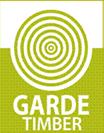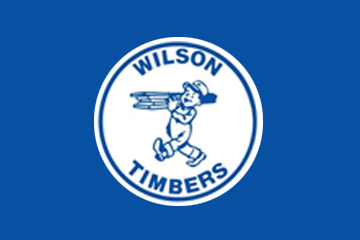Best practice caring for Truss & Frame timber products
Builders and home renovators should understand how to care for truss and frame products post delivery and prior to installation to ensure they are fit for their original purpose.
The Frame and Truss Manufactuers Association of Australia (FTMA) have produced the following guidelines in response to the current building climate and the stress on the supply chain. It is important for builders to know that besides buying the best environmental choice, they also have responsibilities to ensure the product, once installed, remains fit for purpose.
DO’s
-
Trusses should be inspected on arrival at site to ensure no damage has occurred in transit and unloading. Any damaged trusses should be reported immediately.
-
Trusses should be unloaded and stored on an area so that they are resting evenly and straight along their length, i.e no significant (>20mm) “sagging” or “twisting” between support locations. Undulating or sloping ground surfaces are fine as long as the propping/blocking results in the truss packs being straight (they should never be placed directly on wet ground).
-
If stored horizontally (flat), they must be directly supported on blocking at 2.0-2.5m centres to prevent bending of the trusses between blocking.
-
If trusses are stored vertically (upright), appropriate height blocking must be positioned at panel points and adequately secured to prevent tipping or toppling.
-
Trusses should be protected from weather, particularly cycles of rain and sun, using either a tarpaulin or other similar weatherproof material. Ends of the cover should be left open to allow air to flow freely and provide adequate ventilation.
DO NOT’s
-
DO NOT unload (or allow the unloading of) trusses unless you have prepped a clear flat zone to place the trusses.
-
DO NOT use damaged trusses or trusses with damaged components.
-
DO NOT load any trusses where nailplates are exhibiting withdrawal (i.e. more than 1mm gap between nailplate and timber surface). In that event a suitably qualified engineer experienced in timber trusses will need to be consulted to undertake an inspection and provide rectification advice.
-
DO NOT leave installed trusses exposed for extended periods of time – that will increase the potential for nailplate withdrawal due to wet/dry weather cycles. The following provides a general guide:
-
If trusses are left exposed for a normal building cycle 1-2 weeks - no problems are expected.
-
If trusses are left exposed for up to 2 months – it is likely they should be OK. However, if there is any nailplate withdrawal – see above.
-
If trusses are left exposed between 2-7 months – significant nailplate withdrawal is possible, and becomes more likely with increased exposure to wet/dry weather cycles. If withdrawal occurs, seek certified details from an engineer as above.
-
If trusses are left exposed for 8 months or more – they are highly unlikely to be fit-for-purpose and may need to be replaced – seek advice from an engineer as above.
-
DO NOT for any reason hammer in nailplates without any other additional strengthening details certified by an engineer.
|
|
 |
FTMA & TQ Best Practice Guide for Caring for your Frame & Truss Timber Products
|
What timber should you use for decking?
When you’re buying timber to build an outdoor deck it’s important to ensure the product you purchase is true to label and fit for purpose to avoid premature failure.
Unfortunately there have been reports of some traders selling decking timber that’s been “passed off” as highly durable species when it’s not. People are also inadvertently buying decking timber that doesn’t meet Building Regulation requirements.
You can check out the most appropriate timber species to use for specific structural purposes in the book Construction Timbers in Queensland
Naturally durable Queensland hardwood decking timbers such as spotted gum and ironbark will deliver the best performance. They might cost a little more initially but will last and look better much longer than cheaper alternatives. You can purchase Queensland timbers from a member of the Accredited Queensland Timber Merchant Network, you can find a list of these at www.buyqldtimber.com.au
In any case make sure you contact reputable timber merchants, members of Timber Queensland who are guaranteed to sell true to label, and fit for purpose deck timber.
 |
Bretts Timber & Hardware
142 Newmarket Road Windsor
Phone: 07 3361 0777
|
 |
Gill & Co Pty Ltd
1421 Ipswich Road
Rocklea, QLD 4106
Phone: 07 3277 177
Cnr Bloomfield & Princess Streets
Cleveland QLD 4163
Phone: 07 3286 1221
|
 |
Garde Timber
22 Gladstone Street
Moorooka QLD 4105
Phone: 07 3277 6848
|
 |
Langs Building Supplies
66 Eastern Service Rd
Stapylton QLD 4207
Phone: 07 33825222
|
 |
Wilson Timbers
13 Davey Street
Moorooka
Phone: 07 32271988
E-mail: info@wilsontimbers.com
|
 |
Porters
Northern Beaches
Carl Street
Rural View QLD 4740
Mackay - Building Supplies
Carlyle Street
Mackay QLD 4740
Mackay - Hardware & Lifestyle
Cnr Brisbane & Gordon Streets
Mackay QLD 4740
Whitsunday
Cnr Paluma Road & Carlo Drive
Cannonvale QLD 4802
|